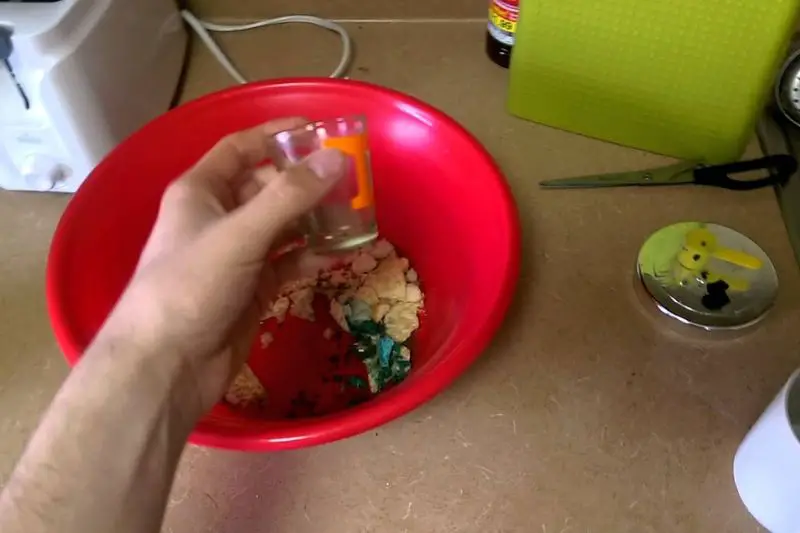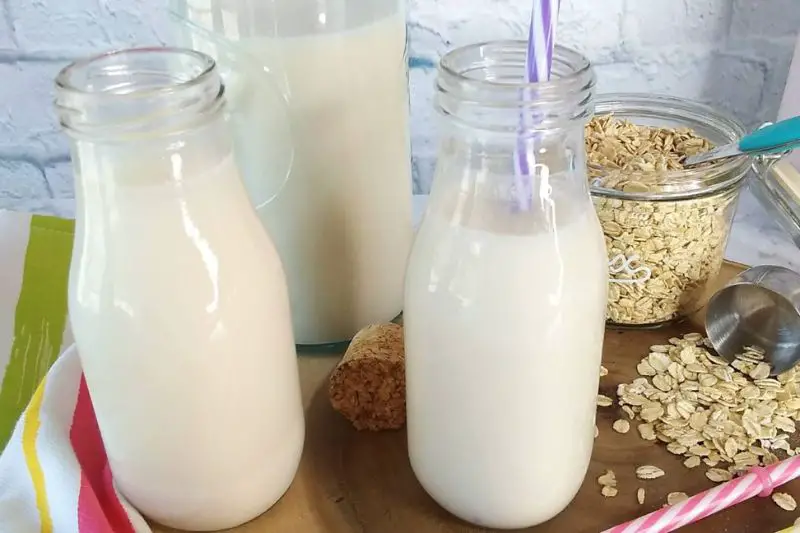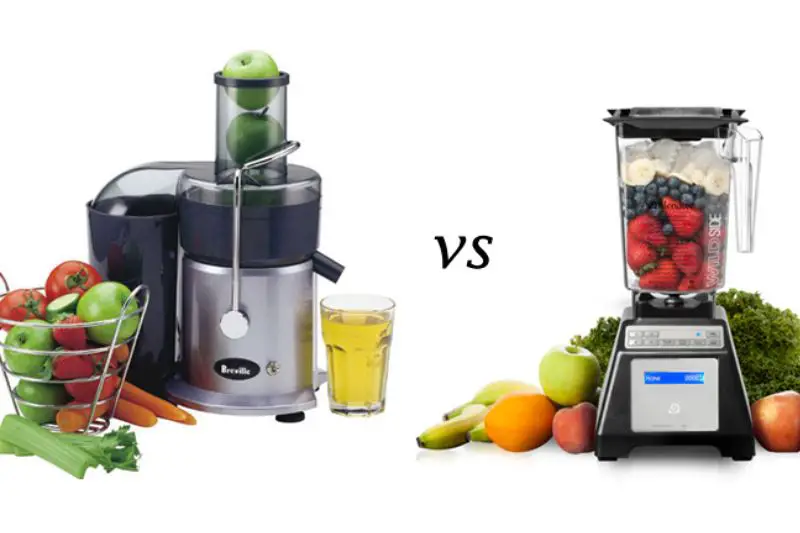How To Blend Vegetables Without A Blender? One can blend vegetables without a blender by employing the process of manual masticatory manipulation.
This involves manually breaking down food items into smaller particles via a mechanical action, and is often achieved through vigorous chewing or by pounding with a mortar and pestle.
When it comes to making healthy meals, adding vegetables is a great way to increase your intake of vitamins, minerals, and antioxidants.
Unfortunately, many people don’t have access to a blender, making it difficult to make smoothies and other blended recipes.
However, there are several ways to blend vegetables without a blender, using everyday kitchen items.
In this article, we will show you how to blend vegetables without a blender, including using a hand masher, food processor, or even just a knife.
With this helpful guide, you’ll be able to make delicious, nutritious meals with ease.
How Do You Blend Fruit Without A Blender? Step By Step:
Blending vegetables without a blender can be a great way to enjoy the natural flavors of Vegetables without added sugar or other ingredients.
It’s also an easy way to make smoothie-like drinks to enjoy as a refreshing treat.
To blend vegetables without a blender, you’ll need a few simple tools and ingredients.
Things You Will Need:
- Safety equipment (helmet, gloves)
- Tools (wrenches, screwdrivers)
- Replacement parts (filters, brakes)
- Fluids (motor oil, coolant)
- Automotive supplies (tape, grease)
- Cleaning supplies (rags, cleaners)
- Storage items (bins, shelves)
- Vegetables Knife
- Mortar And Pestle
- Grater
- Hand Mixer
- Fork
- Spoon
1: Choose Your Vegetables
Choosing your vegetables is an important part of maintaining a healthy diet.
Eating the right types of vegetables can help you get essential vitamins, minerals, and fiber to keep you feeling energized and satisfied.
2: Wash Your Vegetables:
Before you start to blend any vegetables, it’s important to clean them. Washing your vegetables will remove any dirt, dust, or residue that may have accumulated on the vegetable.
To wash your vegetables, first rinse them off in warm water. Next, scrub them with a brush or a sponge.
Finally, pour cold water over the vegetables and let them soak for 10 minutes.
3: Preparing Your Vegetables For Blending:
Now that your vegetables are clean, it’s time to prepare them for blending. To prepare your vegetables for blending, first cut them into small pieces.
If the vegetable is large enough to fit in your blender with room to spare, cut it into smaller pieces before blending.
4: Dice Your Vegetables:
To dice vegetables, first cut the vegetables into small pieces. Next, use a sharp knife to chop the pieces into small squares or cubes.
Finally, add the diced vegetables to your blender and turn it on to medium speed.
5: Process Your Vegetables In A Hand Masher:
If dicing or blending your vegetables isn’t practical or if you don’t have a blender, you can also process them using a hand masher.
To process your vegetables using a hand masher, first mix the diced or sliced vegetables with some water in a shaker cup or jar.
Next, shake the shaker cup or jar until the ingredients are fully mixed together.
6: Pour Your Desired Fruits And Vegetables Into A Strong Bowl Or Chopping Board And Mash Them.
To mash your desired fruits and vegetables, start by pouring them into a strong bowl or chopping board.
Once the ingredients are in the bowl, use a fork or potato masher to mash them until they have reached your desired consistency.
For a finer texture, you can use a blender or food processor. When mashing fruits and vegetables, it is important to keep in mind that some ingredients may require more or less mashing depending on the dish you are making.
7: Add Water:
When mashing fruits and vegetables, it’s important to add enough water to help hydrate the ingredients.
Adding too much water will cause the ingredients to become wet and clumpy. On the other hand, adding too little water will result in tough textures.
When adding water to your mixture, start by adding a small amount of water and stir it well. Next, add a bit more water and stir again.
8. Add Other Liquids And Smoothie Ingredients Such As Sugar Into The Bowl.
Adding other liquids and smoothie ingredients such as sugar into the bowl can be a great way to make your smoothies even more delicious.
Not only can it add more flavor, but also more nutrients, depending on what type of liquid or ingredient you choose.
For example, adding a tablespoon of honey or maple syrup can add natural sweetness to your smoothie and give it a boost in vitamins and minerals.
9: Add Seasoning And Other Ingredients
Adding seasoning and other ingredients to your food can be a great way to enhance its flavor and taste.
With the right combination of herbs, spices, and other seasonings, you can make your dish go from ordinary to extraordinary.
You may find that certain combinations of herbs and spices make your food more flavorful and create a unique flavor profile.
10: Pour Into A Bowl And Serve!
When it comes to preparing a delicious meal, one of the easiest ways to do so is to pour ingredients into a bowl and serve.
You can create a wide variety of dishes using this method from salads and stews to soups and casseroles.
How Do You Puree Food Manually?
Manual blenders are designed for people who want to blend food on their own without the help of an electric motor.
Here are the best ways to blend the vegetables manually:
1. You Can Use A Food Mill:
If you’re looking for a more traditional way to blend vegetables, you can try using a food mill. This type of appliance is used to grind food into smaller pieces.
Similar to a blender, a food mill also has a number of different features that can make blending food easier.
Some of the features that are common in food mills include: a hopper that holds different size pieces of ingredients, multiple plates that rotate while the machine is in use, and an adjustable speed.
2. Get A Chinois Strainer:
You can also try using a chinois strainer. This type of strainer is often used in Asian cuisine to create delicate sauces and soups.
Similar to a food mill, a chinois strainer has a hopper that holds different size pieces of ingredients, multiple plates that rotate while the machine is in use, and an adjustable speed.
3. Use An Immersion Blender:
These blenders are often smaller than regular blenders, and they are also designed to blend food quickly and easily.
Some of the features that are common in immersion blenders include: a wide range of speeds, variable temperatures, and a built-in homogenizer.
Additionally, many immersion blenders also have a built-in vortex generator that helps to create smooth and creamy blends.
4. Try A Chef’s Knife:
This type of knife is designed for chefs who want to blend food using minimal pressure and speed.
Some of the features that are common in chefs knives include: multiple blades that rotate while the knife is in use, an adjustable speed, and a built-in chopper.
Additionally, many chefs knives also have a built-in grater that can be used to grate cheese or other types of vegetables.
5. Try A Cheese Grater:
Cheese graters have been around for centuries and are an essential tool in any kitchen. Not only are they great for grating cheese, but they can also be used to grate carrots, potatoes, and other vegetables.
You can even use them to grate chocolate or nuts! Cheese graters come in several different shapes, sizes, and materials.
6. Use A Fork:
Using a fork correctly is an important skill to have. It may seem like a basic tool to use, but mastering the art of using a fork can make dining much more enjoyable.
To begin, pick up the fork with your dominant hand, and hold it tines down. Place the fork against the food and press down lightly, cutting off a manageable portion.
Then, turn the fork over, so that the tines are facing up, and use it to bring the food to your mouth.
7. You Can Try A Rolling Pin:
Rolling pins come in a variety of shapes and sizes, and can be used for a variety of tasks.
Some of the most common uses for a rolling pin include: rolling out dough for pies, pastries, and cookies; shaping dough into snakes or animals; and forming fruit into balls or tart shapes.
When choosing a rolling pin, it’s important to think about how much weight you’ll be using it, the type of dough you’ll be rolling out, and the size of the Rolling Pin you need.
Final Talk: How To Blend Vegetables Without A Blender?
How To Blend Vegetables Without A Blender? Blending vegetables without a blender is possible and can help you to save time and money.
You can blend them using many household items like a fork, potato masher or even an electric razor. It also helps you to incorporate more vegetables into your diet in an interesting way.
Additionally, it allows you to be creative with the ingredients and flavors that you use.
Therefore, blending vegetables without a blender can be an easy and effective way to enjoy nutritious meals every day.
FAQs
Can Hand Blender Blend Vegetables?
Yes, a hand blender can blend vegetables. However, the results may not be as smooth as if you used a blender.
What Tools Do I Need to Blend Vegetables without A Blender?
You can use a food processor, immersion blender, or simply a knife and cutting board.
How Much Liquid Should I Add to The Vegetables?
You may need to add a bit of liquid, such as water or broth, to help the vegetables blend together smoothly.
How Do I Know when The Vegetables Are Blended Enough?
You’ll know the vegetables are blended enough when they have reached a smooth and even consistency.
Can I Add Other Ingredients to The Blended Vegetables?
Yes, you can add other ingredients such as herbs, spices, and sauces to give the blended vegetables extra flavor.
How Do I Store the Blended Vegetables?
If you plan on using the blended vegetables right away, you can store them in the refrigerator.
If you want to store them for later use, you can freeze them in an airtight container.




